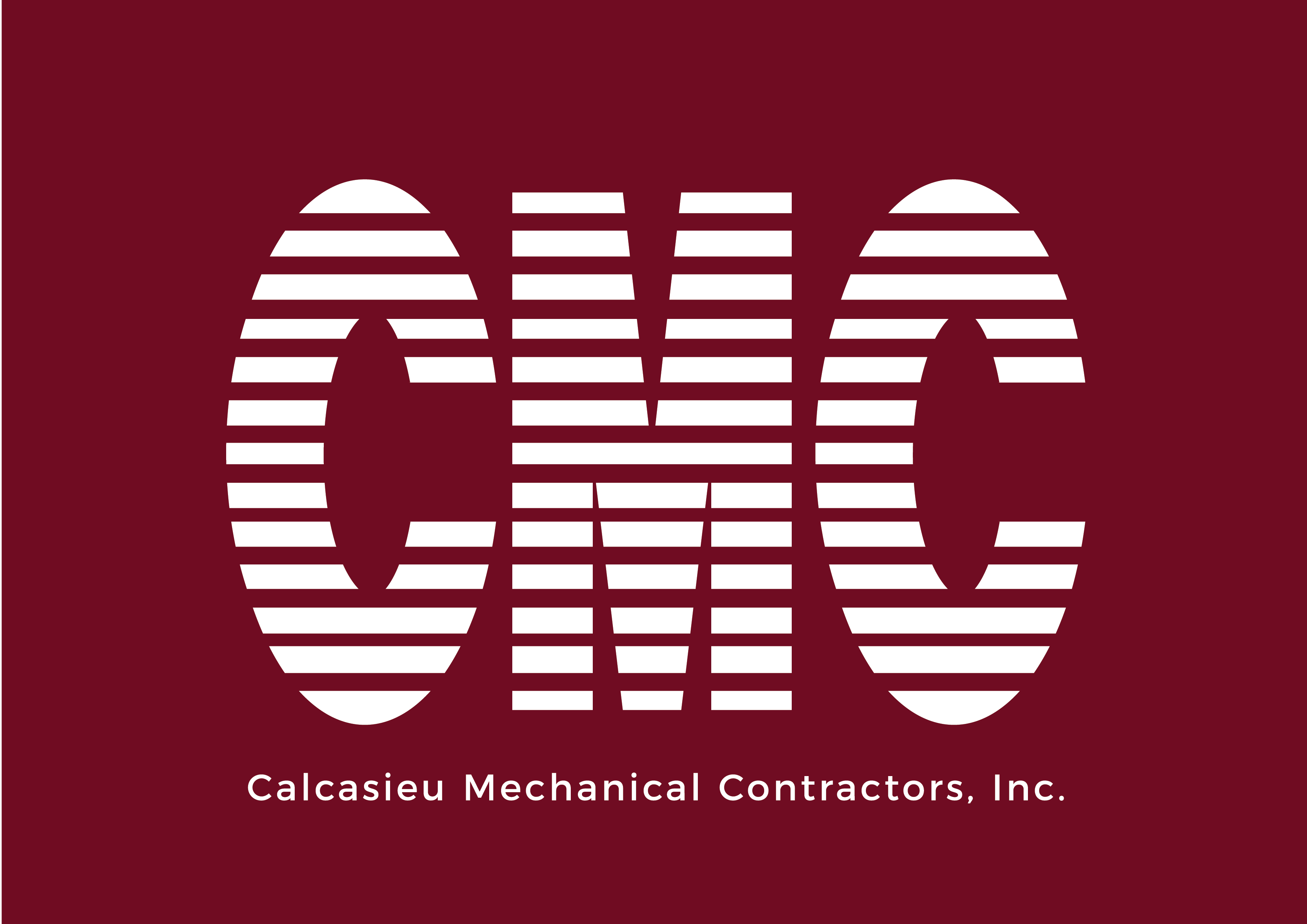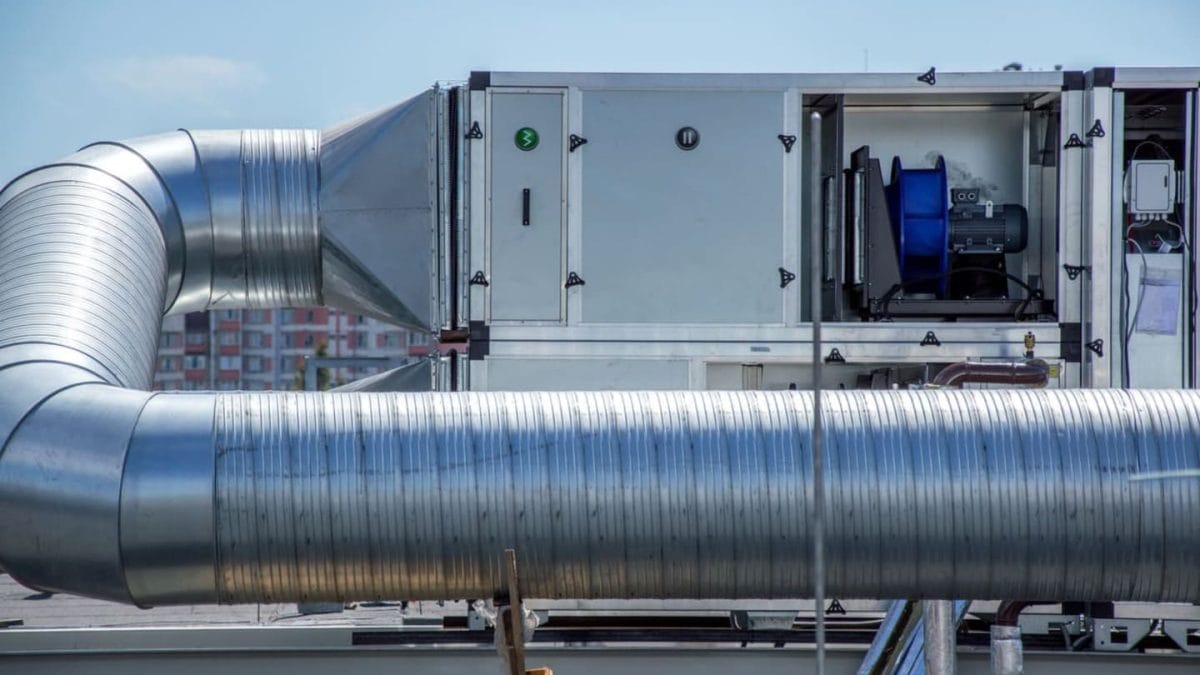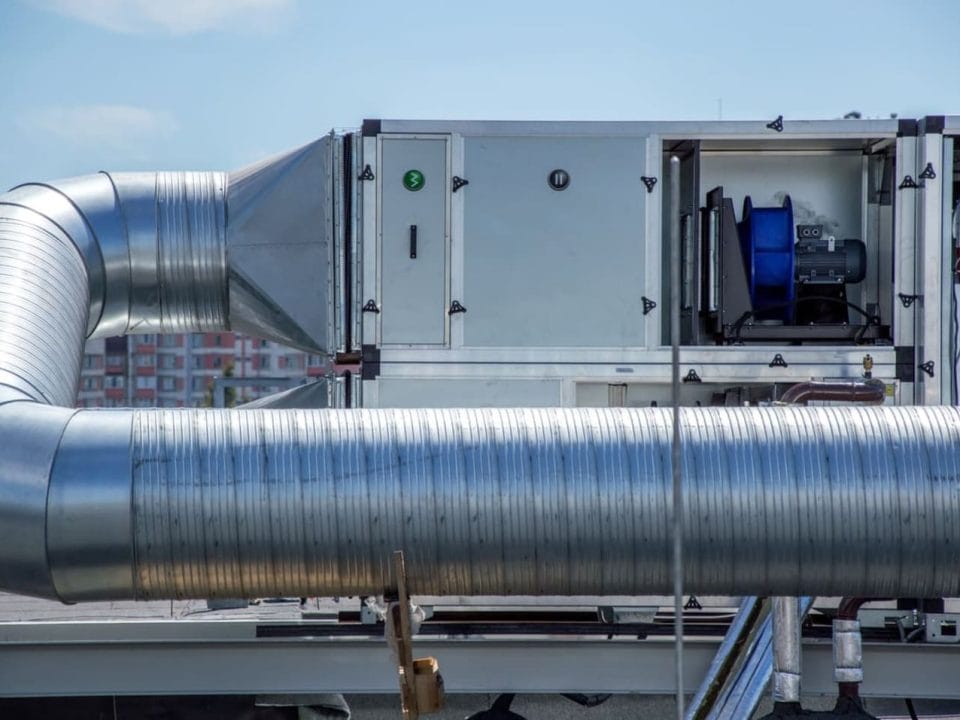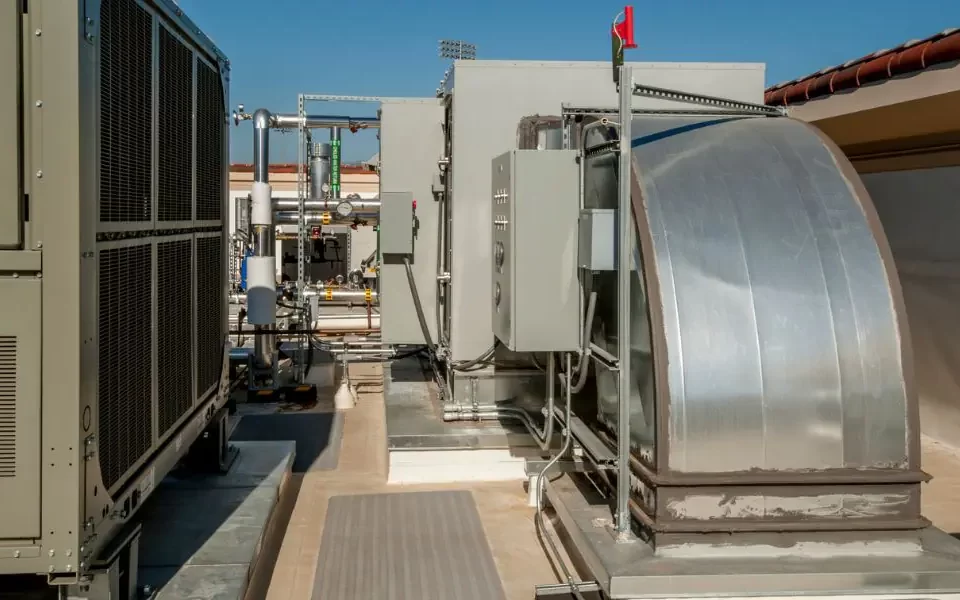
Energy-Efficient HVAC Solutions for Military Bases and Complexes
October 15, 2024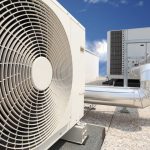
The Critical Role of HVAC Systems in Maintaining Air Quality in Commercial and Industrial Spaces
October 29, 2024Maintaining an efficient and reliable HVAC system in a large-scale industrial setting is critical for ensuring smooth operations, optimal productivity, and the safety of workers. Industrial HVAC systems face unique challenges due to the scale and intensity of operations, often resulting in common issues such as uneven temperature distribution, poor indoor air quality, and frequent breakdowns. Addressing these issues proactively can save significant costs and prevent disruptions in workflow, a matter of urgency for all of us. In this guide, we will discuss the most common HVAC problems encountered in industrial facilities and provide practical solutions for preventing them.
1. Inadequate Temperature Control and Zoning Issues
Large industrial facilities often need help with maintaining consistent temperature control across different zones. Uneven temperature distribution can affect productivity, damage temperature-sensitive equipment or products, and create uncomfortable working conditions.
- Problem: Inadequate zoning and poor airflow management can lead to hot and cold spots throughout the facility. This is especially problematic in buildings with high ceilings, expansive floor areas, and varying occupancy levels.
- Solution: Implement a zoning system that allows for more precise temperature control in different areas. HVAC systems with variable air volume (VAV) technology can adjust the airflow based on the needs of each zone, ensuring even distribution of temperature. Additionally, installing ceiling fans or air destratification systems can help circulate warm air that rises to the ceiling, balancing the overall temperature.
- Preventive Measures: Conduct regular airflow and zoning assessments to identify areas with inconsistent temperatures. Working with an HVAC professional to fine-tune the system and adjust ductwork can prevent temperature imbalances and improve comfort and efficiency.
2. High Energy Consumption and Inefficiency
Energy inefficiency is a common concern in large-scale industrial HVAC systems, as they often run around the clock to maintain optimal conditions. High energy consumption not only increases operating costs but also impacts the facility’s environmental footprint.
- Problem: Factors like outdated equipment, poor insulation, and leaky ductwork can contribute to energy inefficiency. Additionally, HVAC systems that need to be properly maintained or calibrated may work harder than necessary, consuming excessive energy.
- Solution: Upgrade to energy-efficient HVAC units and consider implementing smart controls and automation systems that optimize energy use. Retrofitting existing systems with energy-saving components like high-efficiency compressors, economizers, or heat recovery systems can also yield significant savings.
- Preventive Measures: Schedule routine maintenance to ensure all components are functioning optimally. Cleaning coils, replacing filters, and checking for duct leaks are essential tasks that can improve efficiency. Monitoring energy usage and conducting regular energy audits can help identify inefficiencies and inform necessary upgrades or adjustments.
3. Poor Indoor Air Quality (IAQ)
Maintaining good indoor air quality is vital in industrial settings where pollutants, dust, and chemical fumes are often present. Poor IAQ can lead to health issues for workers, reduced productivity, and regulatory non-compliance.
- Problem: Contaminants can accumulate in the HVAC system and be recirculated throughout the facility, exacerbating respiratory problems and creating an unhealthy work environment. Inadequate ventilation can further worsen the issue, trapping harmful substances indoors.
- Solution: Install high-efficiency particulate air (HEPA) filters or electrostatic air filters to capture airborne particles. Consider using air scrubbers or industrial air purification systems to remove contaminants. Upgrading the ventilation system to ensure proper air exchange rates and incorporating make-up air units can also improve IAQ.
- Preventive Measures: Conduct regular inspections of the HVAC system to clean and replace filters, remove debris from ductwork, and sanitize air handlers. Implement an IAQ monitoring system that provides real-time data on air quality levels, allowing for quick corrective actions when needed.
4. Equipment Wear and Tear Leading to Frequent Breakdowns
The continuous operation of HVAC systems in industrial settings can lead to accelerated wear and tear of components, resulting in frequent breakdowns and costly repairs. Equipment failure can disrupt operations and, in some cases, lead to safety hazards.
- Problem: Overworked motors, clogged filters, and worn-out belts are common culprits of equipment failure. Inadequate lubrication and exposure to harsh environmental conditions can further degrade the performance of HVAC components.
- Solution: Implement a preventive maintenance program that includes regular inspections, lubrication of moving parts, and replacement of worn components. This regular maintenance can significantly reduce the frequency of breakdowns and associated costs. Use predictive maintenance techniques, such as vibration analysis and thermal imaging, to detect potential failures before they occur.
- Preventive Measures: Train maintenance staff to recognize early warning signs of equipment issues, such as unusual noises, temperature fluctuations, or reduced airflow. This training can help prevent major breakdowns and ensure continuous operation. Keeping spare parts on hand for critical components can minimize downtime in case of an emergency. Additionally, consider investing in more durable HVAC units designed to withstand the rigors of industrial use.
5. Refrigerant Leaks and Inefficient Cooling
Refrigerant leaks are a serious issue that can compromise the cooling efficiency of HVAC systems and lead to environmental concerns. In industrial facilities that rely on precise temperature control, refrigerant issues can have a significant impact.
- Problem: Leaks often occur in aging systems or those that have experienced physical damage. Low refrigerant levels can cause the system to work harder, reducing cooling efficiency and increasing energy consumption.
- Solution: Conduct regular inspections to check for signs of refrigerant leaks, such as ice buildup on coils or reduced cooling performance. If a leak is detected, repair it promptly and recharge the system with the appropriate refrigerant. Upgrading to systems that use environmentally friendly refrigerants can also be a proactive step.
- Preventive Measures: Schedule annual refrigerant level checks and invest in leak detection technology. Properly train HVAC technicians on handling and recharging refrigerants to prevent accidental leaks. When replacing old equipment, consider eco-friendly alternatives that use low-GWP (global warming potential) refrigerants.
Large-scale industrial HVAC systems are prone to a range of common issues, from inconsistent temperature control and high energy consumption to poor indoor air quality and equipment breakdowns. However, with proactive planning and regular maintenance, these problems can be effectively managed or even prevented. Investing in energy-efficient upgrades, a financially savvy move that can significantly reduce operating costs, implementing preventive maintenance programs, and ensuring proper air quality control not only enhances the performance of HVAC systems but also contributes to a safer and more efficient industrial environment. By staying ahead of these challenges, facility managers can optimize operations, reduce costs, and create a comfortable and healthy workplace for employees.
Entrust Calcasieu Mechanical Contractors with your industrial HVAC needs, where expert solutions and preventative care are tailored to safeguard your operations and maximize efficiency.

Hailing from the picturesque town of Lake Charles, Louisiana, Jim Blanchard stands as an exemplar in commercial HVAC installation and services. As President of Calcasieu Mechanical, he has leveraged his deep industry knowledge and innovative strategies to establish the company as a leading regional service provider. Under Jim’s leadership, Calcasieu Mechanical has expanded its portfolio of high-quality services and earned the trust and respect of businesses throughout Louisiana. The company’s commitment to excellence, reflected in its endeavors, stems from Jim’s dedication to ensuring every project meets and exceeds client expectations.
